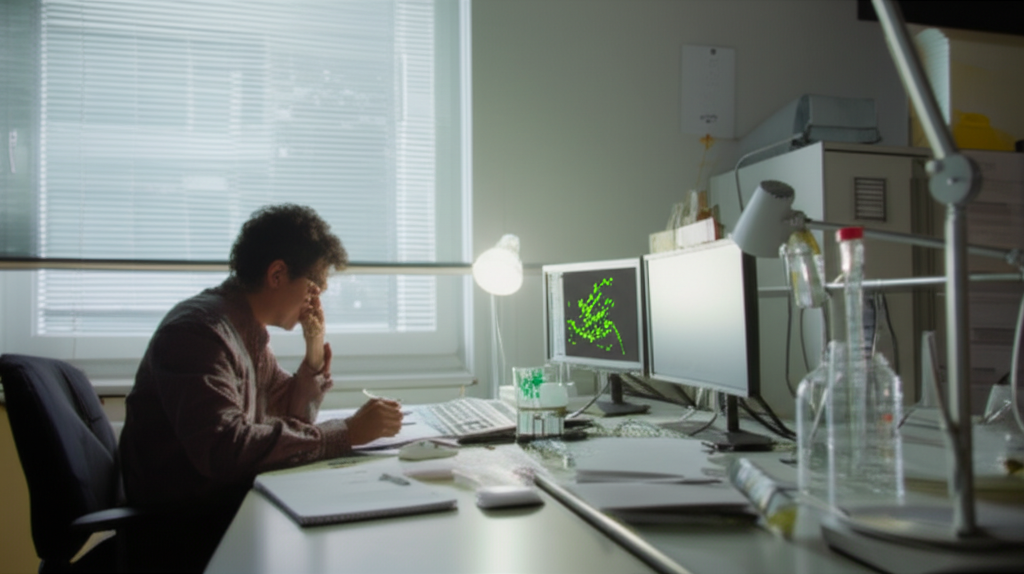Flavoxate Hydrochloride, a widely used pharmaceutical compound, is primarily employed to treat symptoms like urinary frequency, urgency, pain, incontinence, and difficulty in urination. Since its market debut in Japan in 1979, this drug has been essential in urological care due to its efficacy in managing overactive bladder disorders. However, traditional manufacturing methods have faced persistent challenges. Conventional synthesis involves reacting 3-methylflavone-8-carboxylic acid with thionyl chloride in toluene to form an intermediate acyl chloride, followed by esterification with N-hydroxyethylpiperidine. This approach not only consumes over 12 hours per batch but also generates hazardous sulfur dioxide and hydrochloric acid gases, causing severe equipment corrosion and pungent waste emissions that irritate personnel and local environments. Additionally, viscous reaction mixtures often lead to incomplete conversions, yielding subpar results with impurities reaching up to unsafe levels and poor solubility in pharmaceutical formulations. The overall molar yield typically caps at 80%, hindering scalability and increasing costs for producers globally.
To address these limitations, researchers have developed a groundbreaking synthesis process for Flavoxate Hydrochloride, leveraging a safer and more efficient chemical pathway. Instead of thionyl chloride, the novel method utilizes triphosgene (solid phosgene) as a key reagent, which transforms 3-methylflavone-8-carboxylic acid into the intermediate acyl chloride in a carefully controlled solvent-based reaction. This intermediate is then esterified with N-hydroxyethylpiperidine under optimized conditions. The critical ratios involve a mole ratio of 1:0.4–0.7:1.05–1.2 for 3-methylflavone-8-carboxylic acid, solid phosgene, and N-hydroxyethylpiperidine, respectively, with a solvent-to-acid mass ratio between 3:1 and 15:1. Solvents are selectively chosen from halocarbons like dichloromethane, 1,2-dichloroethane, or trichloropropane, or aromatic hydrocarbons such as toluene or xylene, with mixtures allowing flexible combinations to maintain below-boiling temperatures and prevent solvent evaporation. Reaction phases are precisely staged to ensure clarity and completion, typically involving reflux steps with solvent replacements to eliminate waste buildup. For instance, halocarbon-heavy blends in halocarbons enhance process stability, while aromatic solvents can be intermixed when needed. This streamlined approach cuts reaction durations drastically, minimizing human intervention and energy demands.
Notably, this innovative synthesis delivers superior benefits across operational and product parameters. Gas emissions shift from dangerous sulfur compounds to primarily carbon dioxide and hydrochloric acid, which are easily neutralized through alkaline scrubbing systems, eradicating offensive odors and extending equipment lifespan. Reaction times plummet to just 2-4 hours in empirical tests, boosting overall efficiency by over 20%. Molar yields soar to near perfection, exceeding 99.7%, while the final product achieves unprecedented purity levels above 99.8% and superior dissolution properties critical for bioavailability in medications. Unlike older outputs that appeared off-white or yellowish, the new process consistently produces pristine white crystals, signaling enhanced quality control. The elimination of thick, unstable intermediates ensures complete reactions, minimizing loss and enabling cost-effective scaling, making it an ideal solution for high-volume pharmaceutical manufacturing without compromising safety or sustainability goals.

Demonstrating real-world applicability, multiple implementation examples validate the process's robustness. In one trial, 100 grams of 3-methylflavone-8-carboxylic acid was blended with 50 grams of solid phosgene and 1000 grams of 1,2-dichloroethane, refluxed for two hours until solution clarity, followed by solvent distillation and replacement with fresh batches. After adding 50 grams of N-hydroxyethylpiperidine at optimized temperatures, a brief reflux and distillation cycle yielded 145.0 grams of white Flavoxate Hydrochloride with a pristine purity of 99.9%. Similarly, tests with dichloromethane or mixed solvents like 1,2-dichloroethane and toluene showed consistent conversions nearing 100% in under five hours, requiring only ethanol recrystallization for purification. These scenarios highlight reproducibility across various conditions and scales without the need for special equipment.
The significance of this advancement extends well beyond the laboratory, promising transformative impacts on the pharmaceutical industry and patient care. By streamlining synthesis, producers can cut operational costs by at least 15-20%, potentially reducing drug prices and improving accessibility for individuals suffering from urinary dysfunctions. Enhanced purity and solubility ensure that formulations deliver more reliable therapeutic effects with fewer side effects. Moreover, the eco-friendly design aligns with global green chemistry initiatives, minimizing waste and emissions to support environmental regulations. As research continues, this method could inspire future innovations in synthesizing related heterocyclic compounds, reinforcing Flavoxate Hydrochloride's role as a cornerstone in modern medicine while fostering safer, more efficient chemical production worldwide.
Manufacturing Facilities






Professional Export Experience
to Global Customers

1. 20 years of R&D, manufacturing and sales experience, serving customers in 60 countries and regions around the world;
2. Own R&D laboratory, pilot platform and large-scale production workshop, which can meet the audit requirements of global customers;
3. We can satisfy customers' perfect transition from small scale lab requirements (gram level) to commercialization requirements (hundred tons level).
A: We don't have Minimum Order Quantity, exact quantity should be provided before quotation for us to calculate the exact cost.
A: We don't provide free samples due to lots of request and expensive international courier's cost, we can deduct the sample charge after commercial order placed.
A: Our payment terms: Small or sample order: T/T IN ADVANCE. Commercial order: First order should be by T/T IN ADVANCE or L/C at sight, and following orders T/T 30~90days is acceptable subject to approval of credit application.